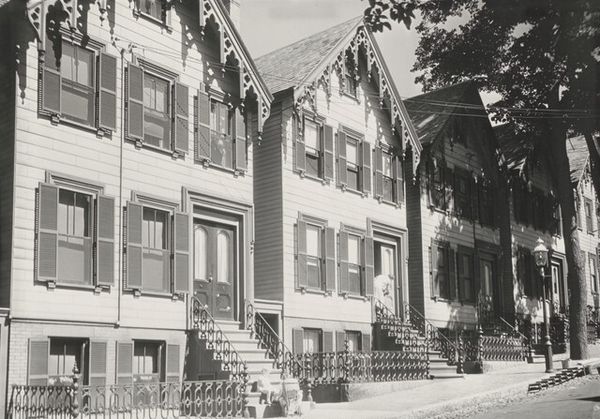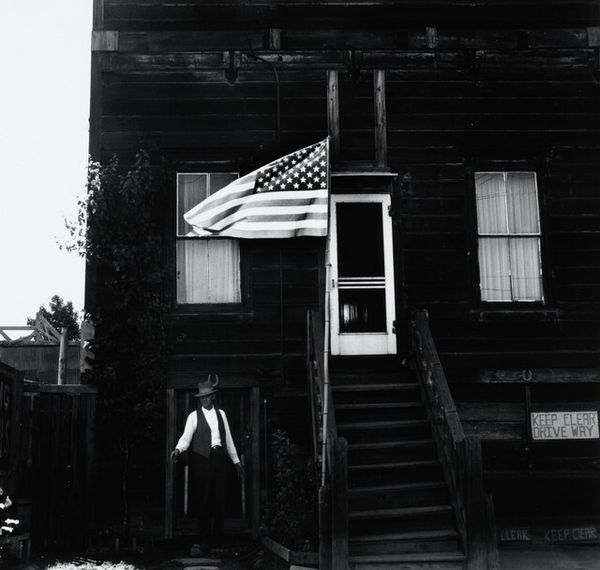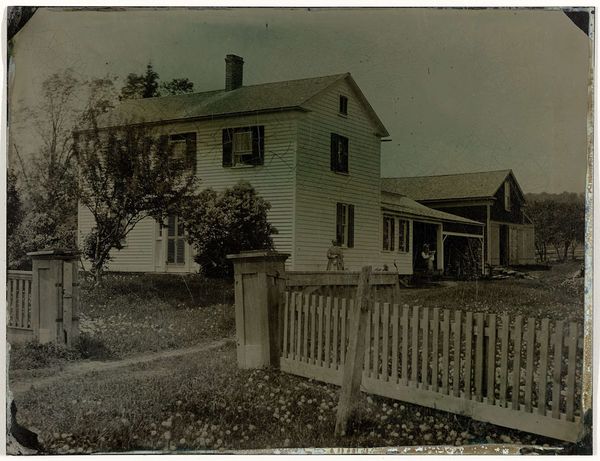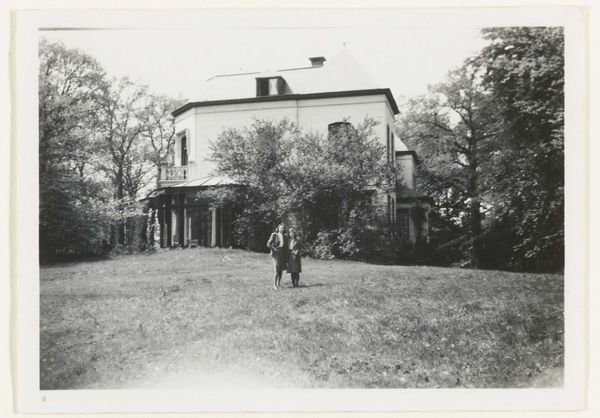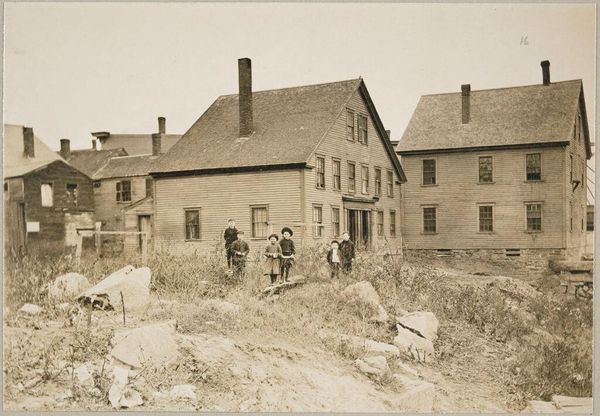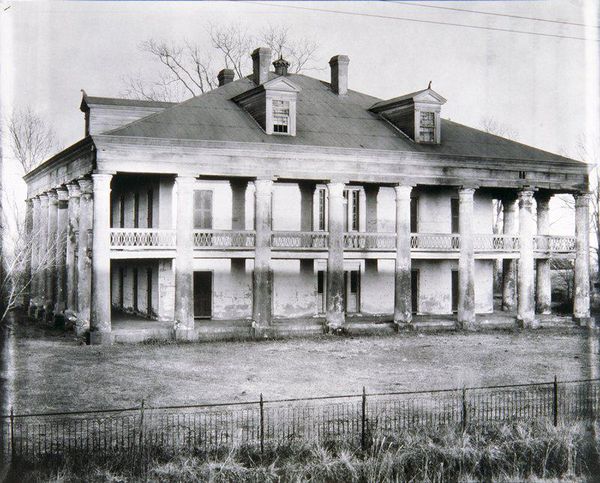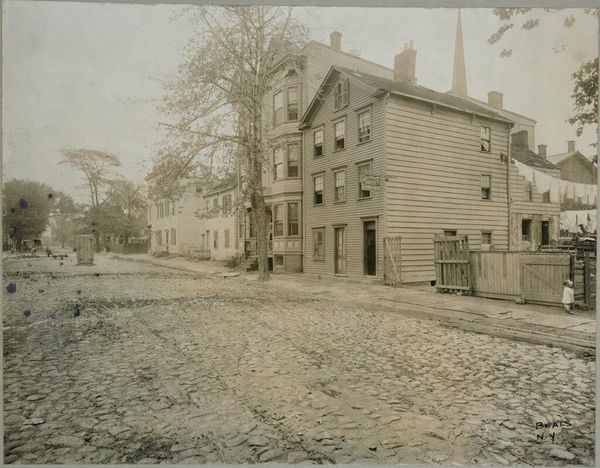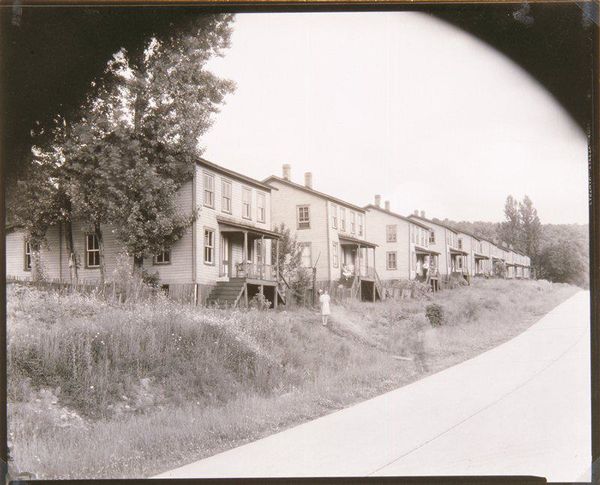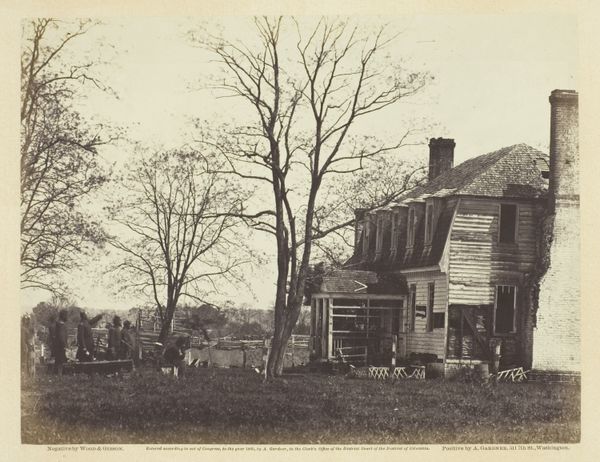
Dimensions: sheet: 7.9 x 15.7 cm (3 1/8 x 6 3/16 in.)
Copyright: National Gallery of Art: CC0 1.0
Curator: This photograph, taken by Walker Evans in 1935, is titled "Company Houses, Gormania, West Virginia." It offers a stark view of worker housing during the Depression era. Editor: A bleak row, isn’t it? The unadorned facades, stretching into the distance like a visual echo. It speaks of uniformity, a kind of architectural constraint. Curator: Indeed. Evans’ work from this period, often done for the Farm Security Administration, deliberately avoids romanticism. He's meticulously documenting the material realities of American life, showing us these structures not just as buildings, but as products of a specific economic system. We see the basic construction, the repetitive design; everything emphasizes functionality over aesthetics. Consider the siding, probably cheap and mass-produced, and the placement of each identical house along the bare landscape. Editor: And the figures, positioned almost like symbolic markers – they appear stilted, or trapped. Are those children on the leftmost porch and a woman with what looks like her son on the front of the building a few houses over? I think they underscore the limitations imposed by these homes; the company houses project no emotional wealth or security, only stark repetition. It evokes the feeling of being observed, regimented in a certain way. Curator: Absolutely. Evans is acutely aware of how architecture and the built environment shape the lives and experiences of individuals. This wasn’t just about providing shelter; it was about controlling labor through spatial organization. You know, the lack of ornamentation is telling. Editor: Those dark chimney tops certainly carry echoes of industry and its demands, so they serve as an important visual and symbolic anchor, I believe. It all feels weighted and heavy with history and consequence, even this small community that looks completely anonymous, devoid of human life in its own right. Curator: I think examining how materials are used and considering the systems of labor, we gain an expanded comprehension of its impact. The act of photography here becomes a social act, reflecting on both the intended use of these resources, and their emotional toll on people who inhabited these constructed environments. Editor: What strikes me, in contemplating this work, is the persistence of such iconography; these company houses exist now as powerful visual testaments, continuing to communicate hardship even generations after their construction. Curator: Precisely. Evans' "Company Houses" reminds us that our built environments aren’t neutral. They're reflections of power, economy, and ultimately, human experience. Editor: It’s left a haunting echo, both immediate and timeless, in my mind.
Comments
No comments
Be the first to comment and join the conversation on the ultimate creative platform.

